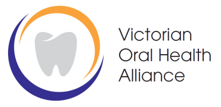Poor oral health continues to be one of the strongest indicators of inequality in Australia, yet dental health continues to be absent from health policy discussions in this country.
- There are 200,000 older Australians living in residential aged care who have poor access to dental care.
- The Aged Care Royal Commission highlighted significant neglect and countless stories of poor oral health.
- We need a Senior Dental Benefits Scheme to ensure that older Australians can access dental care when they need it.
- Older Australians deserve better than what they are currently getting.
- We need you to tell our politicians to take action.
ADAVB is calling on the Federal Government to take urgent action to improve access to public dental care and help improve oral health.
The problem
Dental diseases are some of the most prevalent diseases affecting Australians across all ages. One in three children experience tooth decay by the age of 5-6 years, and more than 50% of Australians over the age of 65 years have gum disease. Dental problems are the leading cause of preventable hospitalisation for Australian children. More than 85% of dental care is provided through the private sector. People with poor oral health may experience pain and embarrassment, have trouble speaking and eating, miss school, have trouble getting a job, and develop other serious health problems.
That’s why it’s so important that all Victorians have access to regular dental care.
But there is one section of the community where these problems are exacerbated. Older Australians living in residential aged care have some of the poorest oral health in the nation, and suffer significant barriers in being able to access dental care. The Royal Commission into Aged Care Safety and Quality highlighted these issues for many of the nearly 200,000 people living in residential aged care.



The current public system can’t cope with the demand, with waiting lists that are now more than 2 years long evidence of this. What we really need is meaningful and coherent dental policy at the federal level, not the current erratic model we have experienced in the past where various schemes have been introduced and closed down.
There is clearly a need for government-funded dental-care programs that are targeted, have clear eligibility criteria, cover a broad spectrum of dental services, can be introduced in phased stages, and have minimal, if any, capital costs to address these oral health inequities. The Child Dental Benefits Schedule is an example of such a program that provides an important mechanism for socioeconomically disadvantaged children to receive dental care from either private dentists or public dental services.
The best place to start this reform is to address the oral health neglect in residential aged care. Older Australians deserve better than what they are currently getting.
ADAVB focuses on key recommendations including:
- the establishment of a Senior Dental Benefits Scheme
- Upskilling the Aged Care Workforce
- Including oral health in the Over 75 Health Assessment and
- Reviewing the Aged Care Quality Standards
VOHA encourages you to email your local Member of Parliament and candidates for the upcoming election which can be done HERE.
To access the full campaign click HERE.
